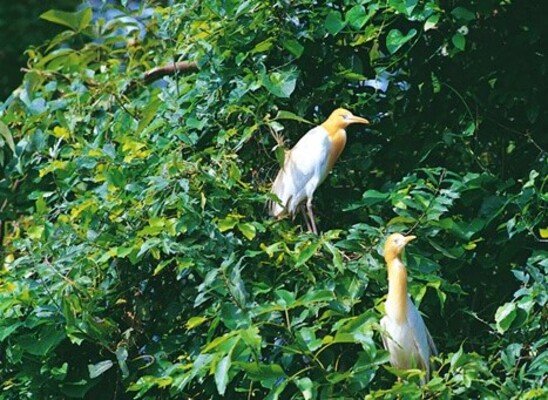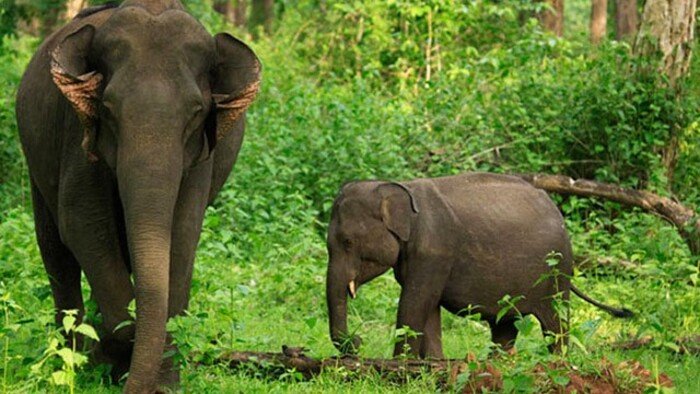Wayanad features a diverse range of habitats, from dry deciduous to moist deciduous forests on the lower slopes to ‘vayals’ (small meadows in the forest, typically waterlogged and marshy, that attract a variety of species), freshwater lakes, and high-elevation sholas (montane evergreen forests interspersed with vast grasslands). With such a diverse spectrum of habitats, the biodiversity is naturally diverse, with each species often adapted to a specialised niche. There are a lot of flowering plants, including delicate balsams and a lot of variety. In recent years, new species of frogs, orchids, and spiders have been discovered, demonstrating that this is still a mysterious wilderness.
Muthanga Wildlife Sanctuary

Thousands of tourists visit Muthanga Wildlife Sanctuary in Wayanad every year because of its beautiful green forest, which offers charming sights and unforgettable experiences. Muthanga Wildlife Sanctuary, Kerala’s second largest wildlife sanctuary, is made up of tropical moist dry deciduous, evergreen forests, bamboo thickets, and plantations, and is home to a wide range of birds and animals. The sanctuary is part of the Nilgiri Biosphere Reserve and is rich in biodiversity. The management places a strong emphasis on scientific conservation while also taking into account the general way of life of the tribals and other people who live in and around the forest. The Sanctuary is a Project Elephant site because of its high population of pachyderms.
Pakshipathalam Bird Sanctuary

Every trekker’s dream destination is Wayanad. The Pakshipathalam Bird Sanctuary in Wayanad is one such place that has caught the hearts of every tracker, ornithologist, and environment enthusiast. Here, virgin forests, streams, and steep hills combine to provide demanding hiking opportunities. Trekking for 3 hours is perhaps the finest way to see the bird sanctuary’s rural settings. The presence of the “Edible Nest Swift Light” at Pakshipathalam Bird Sanctuary is well-known. The nest is comprised of solidified saliva and is used to make bird’s nest soup, according to legend. An excellent excursion in this rare forest area is led by a local tribal guide. The deep caves at the northern end provide an excellent perspective of the area’s biodiversity. The diversity of bird species that can be found here is unrivalled. Occasionally, herds of gaurs can be seen passing through, and Giant Malabar Squirrels greet visitors. It’s a lovely way to spend a day in Wayanad while being surrounded on all sides by nature.
Wayanad Wildlife Sanctuary

Wayanad Wildlife Sanctuary is an important natural habitat for many rare and endangered species of flora and fauna, as well as a great place to visit for wildlife enthusiasts. Muthanga and Tholpetty are two discontinuous pockets that make up this area. Tholpetty is located in the north of the district, near to Thirunelli, while Muthanga is located in the south of Wayanad, around 18 kilometres from Sulthan Bathery. Both of these nooks, which together encompass 344.44 square kilometres, are noted for their rugged wild charm. Tourists can also go bird watching or forest trekking if they make a reservation in advance. Wayanad Wildlife Sanctuary is a biodiversity hotspot that is a crucial part of the Nilgiri Biosphere Reserve.
Tholpetty Wildlife Sanctuary

Tholpetty Wildlife Sanctuary, also known as Wayanad Wildlife Sanctuary, is a lovely spot 20 kilometres east of Mananthavady on the Kodagu Road. The jeep journey here allows you to see a variety of animal and bird species in their natural habitat. Elephants, guars, deer, monkeys, tigers, leopards, bears, and a variety of reptiles, fishes, butterflies, and birds, including vultures, can all be seen. Visitors are limited to the tourism zone on the outskirts of the city. It provides a valuable perspective on how we must work to protect these natural treasures.
Best resorts near wildlife sanctuary in Wayanad – Click here
